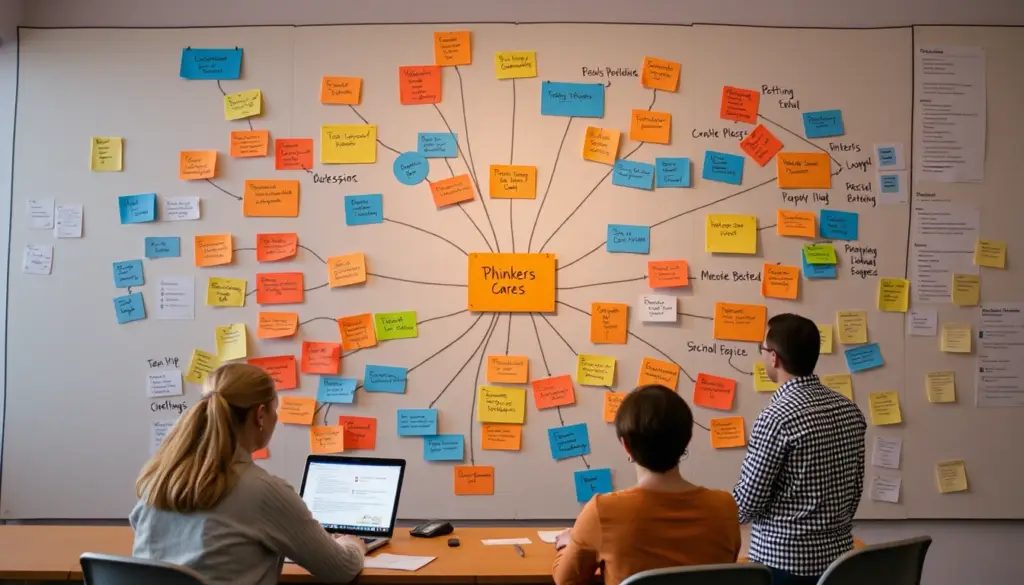Creativity is the heartbeat of innovation, fuelling writers, designers, and thinkers to turn abstract ideas into reality. However, in today's fast-paced world, even the most creative minds need a helping hand to streamline their workflows and amplify their output. This is where technology steps in. With the right tools, you can unlock new levels of productivity, precision, and inspiration. Let's dive deep into some of the most impactful tools for modern creators, examining their features, benefits, and how they can transform your creative process.
For Writers: Turning Ideas into Impactful Narratives

1. Scrivener
Overview: A writer’s Swiss Army knife, Scrivener is perfect for novelists, screenwriters, and researchers.
Key Features:
- Project Organization: Break your work into chapters or sections and view them as a corkboard or outline.
- Distraction-Free Mode: Write free from external distraction.
- Research Storage: Store notes, images, and references under your project.
Who Should Use It? Authors who are juggling large projects with the needs for structure as well as the flexibility.
2. Grammarly
Introduction: More than a grammar check, Grammarly boosts your writing for better readability, tone, and effect.
Core Features:
- Style Improvements and Conciseness: Advanced suggestion of style correction and concision.
- Tone Detection: Let your writing convey just the right emotion-be formal, friendly, or persuasive.
- Integration: Works well with browsers and Microsoft Word, even integrates with Google Docs.
Who It is Best Suited For: For writers, for perfecting and polishing work.
3. Ulysses
A minimalist writer’s app for authors, bloggers, or an academic.
Main Features:
- Markdown Support: Write in simple codes, export to a variety of formats.
- Writing Goals: Follow your word counts to track your writing.
- Cloud Sync: Access your work anywhere with iCloud support.
Who Should Use It? Writers looking for simplicity and focus in their workflow.
4. ChatGPT (OpenAI)
Overview: AI-powered writing assistant for generating ideas, drafting content, and overcoming writer’s block.
Key Features:
- Idea Generation: Get plot suggestions, title ideas, or even creative solutions to problems.
- Content Drafting: Generate first drafts to save time.
- Customizable Output: Specify tone, length, and audience for tailored results.
Who Should Use It? Writers seeking inspiration or producing content quickly.
For Designers: Creating Graphic Masterpieces

1. Figma
Overview: A design collaboration tool, best suited for UI/UX projects.
Key Features:
- Collaboration in Real-Time: Work with the team on a single file, simultaneously.
- Prototyping: Mock up interactive pieces without requiring extra tools.
- Cross-Platform: Works smoothly in browsers and on desktops.
Who Should Use It? Designers working on teams or in digital interfaces.
2. Procreate
Overview: A professional-grade drawing app for iPads, loved by illustrators.
Key Features:
- Custom Brushes: Create and use unique brushes tailored to your style.
- Layer Management: Organize complex designs with ease.
- Time-Lapse Recording: Capture your creative process for portfolio or social sharing.
Who Should Use It? Digital artists and illustrators seeking a portable yet powerful tool.
3. Canva
Overview: An intuitive design tool for creating social media graphics, presentations, and more.
Key Features:
- Drag-and-Drop Interface: Quickly design without having to know how to code.
- Extensive Templates: Thousands of readymade templates available.
- Brand Kit: Keep your brand cohesive with custom colour palettes, fonts and logos.
Who Should Use It? Non-designers and pros who need something quick and professional.
4. Blender
Description: A free, open-source 3D modelling, animation, and rendering tool.
Key Features:
- Comprehensive Toolset: Everything from sculpting to rigging and video editing
- Photorealistic Rendering: Best visuals from advanced rendering engines like Cycles.
- Community Support: Large community with tutorials, plugins, and advice.
Who to Use It? 3D artists and animators creating assets for video games to film.
For Thinkers: Structure and Analyze Thoughts

1. Miro
Description: Virtual whiteboard for brainstorming, mapping, and collaboration.
Features:
- Canvas without End: Map your thoughts without having any space bounds.
- Templates: Get started using a pre-structured framework to brainstorm, flowchart, or mind map.
- Team Collaboration: Share boards and collaborate in real time.
Who Should Use It? Teams or individuals mapping out complex ideas or workflows.
2. Notion
Overview: A versatile productivity tool for notes, databases, and project management.
Key Features:
- All-in-One Workspace: Combine to-do lists, knowledge bases, and calendars in one place.
- Customizable Templates: Tailor your workflow to suit your needs.
- Team Collaboration: Share projects and updates seamlessly with teammates.
Who Should Use It? Thinkers needing a centralized hub for their projects and thoughts.
3. Obsidian
Overview: A knowledge management tool that aids in the association and organization of ideas.
Key Features:
- Graph View: Sees how your notes and ideas relate.
- Markdown Support: Cleanly write with lots of formatting options.
- Local Storage: Keep all your data local for enhanced privacy.
Who’s This For? Deep thinkers and researchers are building these webs of connected knowledge.
4. Wolfram Alpha
Overview: A computational machine designed for solving problems, exploring data
Key Features:
- Instant Calculations: Math equations to financial projections.
- Data Analysis: Enter your data to get meaningful insights.
- Extensive Knowledge Base: Provides answers across a wide spectrum of domains including science, technology, and history.
Who should use it? Analysts, students, and problem-solvers in need of accurate, real-time data.
The Tech-Creativity Symbiosis
Technology isn’t here to replace creativity but to amplify it. The tools above offer solutions to common challenges, freeing up mental space for ideas to flow. Whether you’re a writer seeking clarity, a designer pushing boundaries, or a thinker cracking puzzles, there’s a tool tailored to your needs.
But it is in balance that the secret lies. Use technology to support your creativity, not define it. Use the tools, but remember that innovation comes from the human spirit.
What will you create today? The possibilities are endless.
